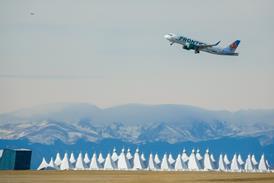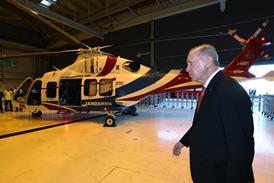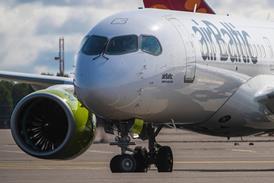After a tortuous gestation, Boeing's 7E7 looks as if it may bring rewards for manufacturer, airlines and the environment
New products are the life blood of the aviation industry, but for Boeing launching a new aircraft has been like trying to get blood from a stone. Now that the rock has cracked and the flow of orders has begun, the decisiveness of the 7E7 launch should silence Boeing's critics.
Instead of the painful and lengthy process of assembling a quorum of launch customers representing a breadth and depth of orders sufficient to impress the board, as Airbus did with the A380, Boeing has launched the 7E7 with one large order from one major airline.
All Nippon Airways (ANA) is on its way to becoming Boeing's model airline. The Japanese carrier's long-term fleet plan is to operate just three types of aircraft, all Boeings - the 737-700, 7E7 and 777 - mirroring the slimmed-down product line the manufacturer is moving towards.
For ANA, the 7E7 was a particularly good fit - so good that the airline never issued a formal tender inviting Airbus to compete with its proposed A30X. In Japan's unique domestic market, a 20% lower fuel burn than that of a 767 is a compelling advantage, and the aircraft's lower weight will take the edge off Japan's high landing fees.
For Japan's industry, the 7E7 is hugely important, its involvement building on a successful partnership with the US giant on the 777. For Boeing, Japanese industry participation has been critical in getting the programme off the ground, its 35% share of the airframe - the development costs backed by Japanese government loans - is a huge burden shared in what promises to be a $10 billion programme.
Boeing insists there was no link between ANA's launch decision and Japanese industry involvement, but what is certain is that Japan's manufacturers in framing their business plans - and its government in declaring the 7E7 a national project - were influenced by the strong likelihood that ANA would buy the aircraft.
If there was little surprise at the ANA order, at Boeing there was some astonishment that the 7E7 has been launched sooner than most expected. After its lengthy, painful, often embarrassing and ultimately unsuccessful efforts to interest airlines in various 747 stretch proposals and the Sonic Cruiser, Boeing may now find it has a tiger by the tail.
Defending Boeing's product-development track record, former chief executive Phil Condit once described launching an aircraft as a messy process. And Boeing appeared to make more of a mess than most, staying with derivative designs while its rival introduced new models. The demise of the 757 and uncertain future of the 767 show that derivatives can only extend a product's life so far.
Launch of the 7E7 infuses new blood into Boeing. That the aircraft will succeed in reinvigorating the middle of the market seems clear from the number of active order discussions under way with airlines around the globe. Boeing is even expressing some concern that the early demand for the aircraft could outstrip the initial supply.
Even if this proves true, it is a good problem to have as Airbus has no quick answer to the 7E7. The manufacturer is bogged down with the development of the A380 and its derivatives, as well as the A400M military airlifter, and has no appetite to launch another costly all-new aircraft programme in the immediate future.
Residing at the heart of a streamlined product line, the 7E7 cannot help but have an impact on the Next Generation 737 below it and the 777 above it. A 20% operating cost cut will be like manna to the profit-starved airlines.
Boeing has acknowledged that it has begun studying a successor to the popular 737NG that takes advantage of the efficiency-improving technologies in the 7E7. But a decision to replace the 737 will not be taken soon, or lightly. The Next Generation family is selling well, particularly to low-cost carriers, and many airlines are still in the early days of building fleets. This contrasts starkly with the end-of-life malaise gripping the 757 and 767. But the 737NG will be replaced, eventually, and the 7E7 will be the model for its successor. So impressed are airlines by its cost-saving promises, they are already pushing Boeing to take the technology upwards to create a 7E7-based replacement for the 300-seat 777 models.
If rocks had jugulars, then Boeing may have hit a rich vein with the 7E7. The environment is likely to be the hottest topic of the first years of this second century of flight, and an aircraft that consumes less and pollutes less is likely to be more welcome in more places. Fuel costs are sky high, and environmental characteristics that incur penalties or deny access can only drive airline profits downwards.
Source: Flight International























